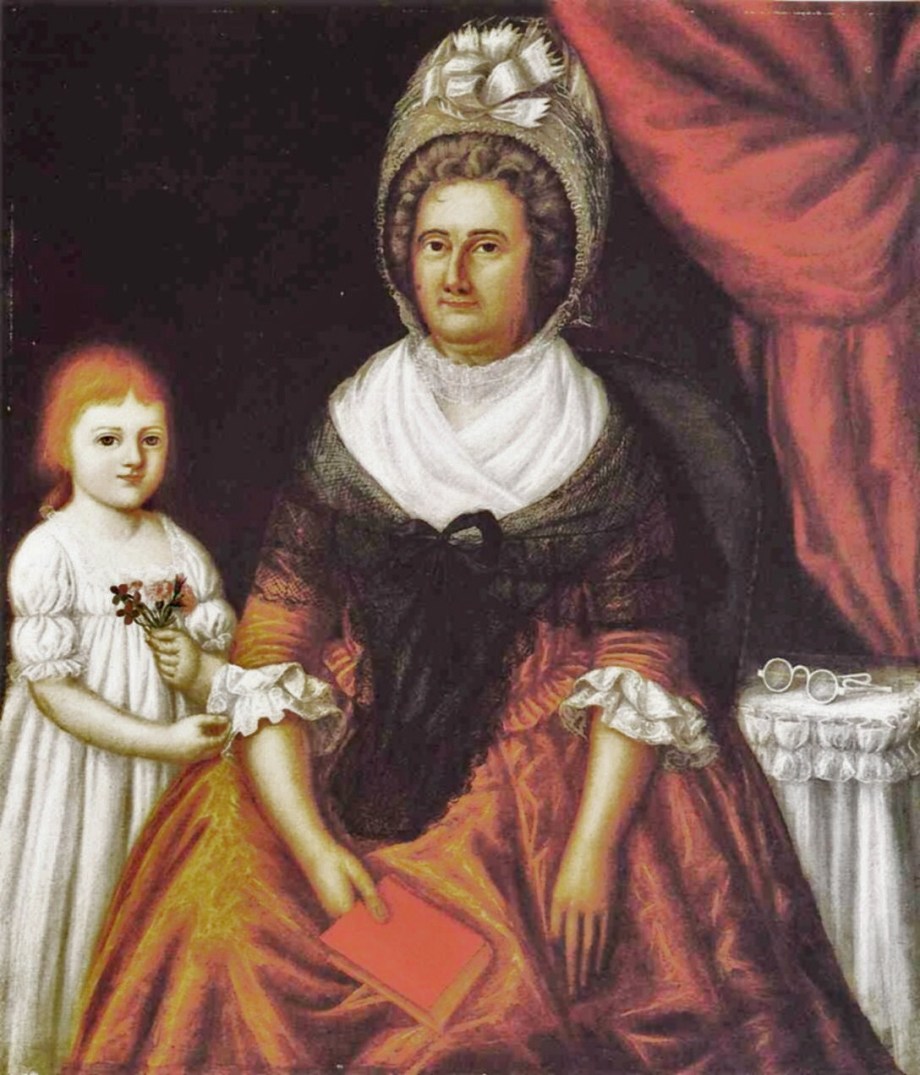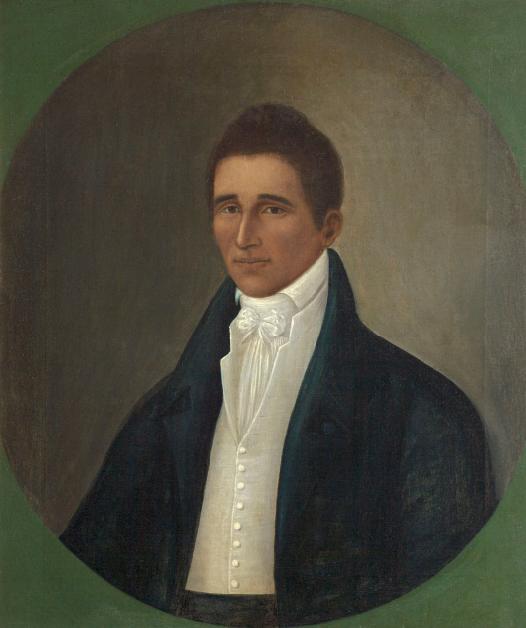Joshua Johnson, sometimes referred to as Johnston, is known as the first professional African American painter to rise to prominence in America. He was born a biracial slave c.1763 and raised in Baltimore, MD. His artistic genius as a self-taught portraitist gained him esteem among wealthy and middleclass white families, as well as abolitionists in Maryland. He received his freedom in 1782 and began advertising as a portrait artist and limner in the city. Much of his life is unknown. His death is believed to be c.1824. Records indicate that he was married twice with children resulting from his first marriage. He is also listed in the Baltimore city directory of 1817-1818 among “Free Householders of Colour.” One of his former studios is now known as the Morris A. Mechanic Theatre, in Baltimore City. His paintings can found in the Baltimore Museum of Art, the Maryland Historical Society, Metropolitan Museum of Art in New York, the collection of Bill and Camille Cosby, the National Gallery of Art and several other institutions. He is one of the most significant African American artists in the history of early American art.
Johnson was the son of George Johnson (Johnston) a white man and an unidentified African slave woman, owned by William Wheeler, Sr. On October 6, 1764, Johnson was purchased by his father and acknowledged as his son in a confirmed manumission. Upon purchase, Johnson was presented with a term of agreement. Under the conditions of the agreement, Johnson would be required to apprentice as a blacksmith or accept his freedom at the age of 21. In 1798 Johnson was commissioned by justice of the peace, Colonel John Moale, to paint a portrait of his wife and granddaughter, this would mark the beginning of success in Johnson’s illustrious career.

Joshua Johnson never received any formal training or education. He was however influenced by surrounding artists and attitudes of the time. Most of his subjects are wealthy white families, elaborately adorned, stiff, regal and implying signs of status and beauty. Johnson arranges his portraits in a very traditional early American fashion, with subtle signature touches. For example, he uses the color red quite often among women and children. They can be seen holding red fruits and flowers, symbolizing fertility. In 1805 Johnson created a painting of an unidentified gentleman. It was later discovered to be the portrait of AME founding member Daniel Coker. Artists such as John Drinker and Caleb Boyle provided Johnson with a foundation to build upon. He lived relatively close to other artists, and craftsman, accepting odd jobs painting furniture for a living at times. As commissions began to multiply for his artwork, he moved closer to patrons, changing residences as business dictated.

For over 25 years Joshua Johnson painted throughout parts of Maryland. Stiles T. Colwill, a former Maryland Historical Society curator estimates that Johnson completed approximately 200-300 paintings during his lifetime. He states, “They still keep turning up and I must get two or three letters a year from people inquiring about his work,” Prices for an original Johnson work can range from $4,500 to $100,000 at auction houses. Born a slave, Johnson obtained his freedom and became a commercial success, creating a landscape for African American artists for years to come.